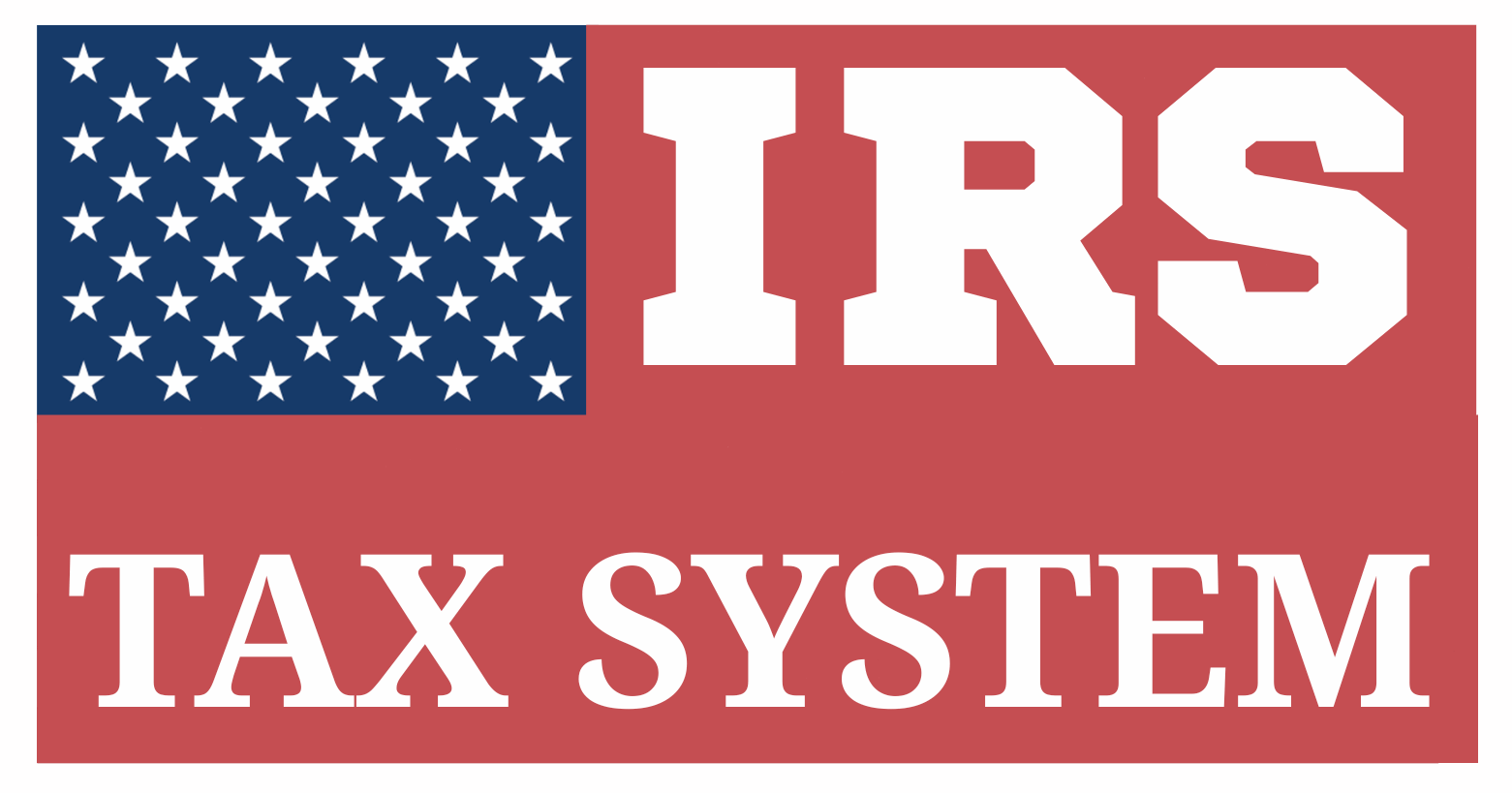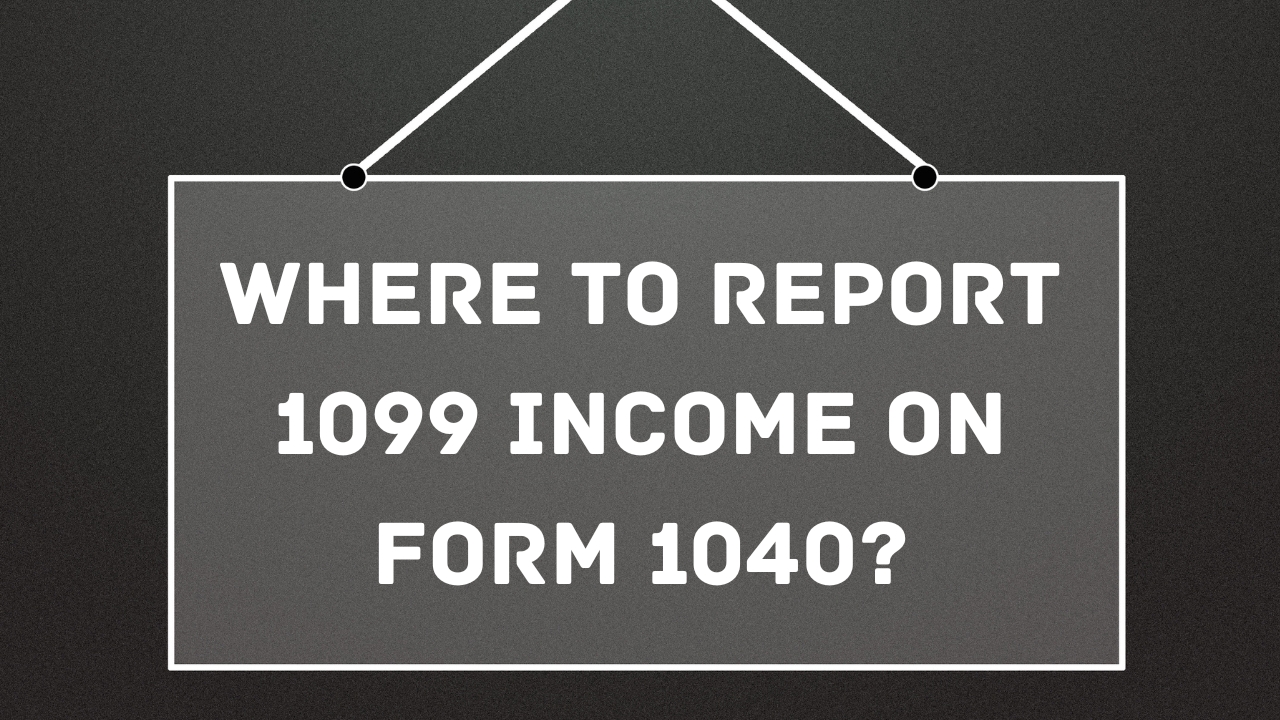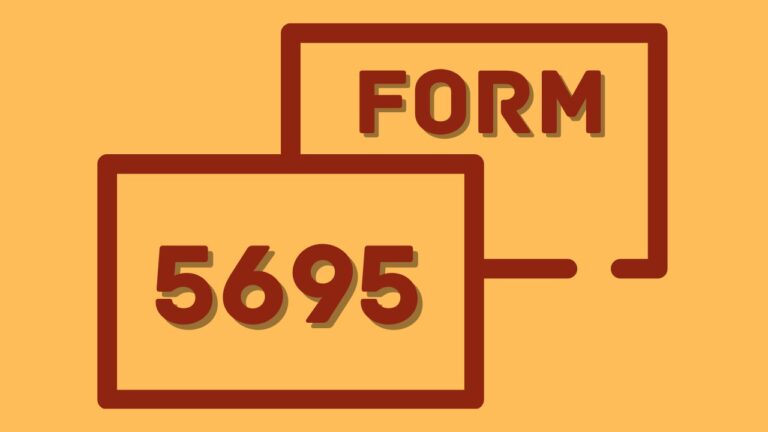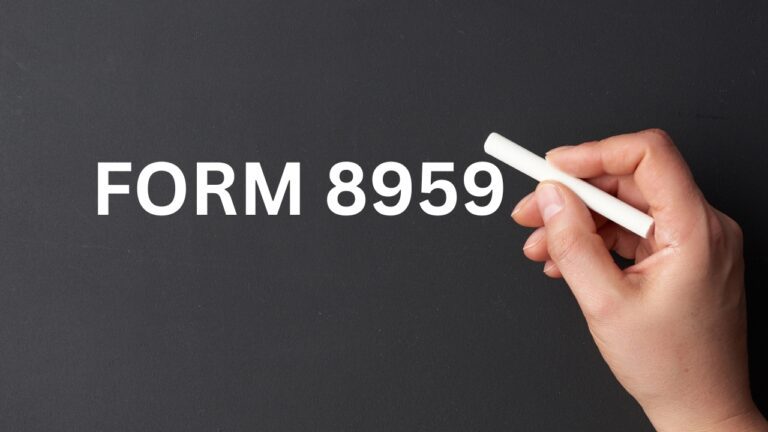Where To Report 1099 Income On Form 1040? Easy Explanation
Table of Contents
Complete Reporting Guide Of Form 1099 On From 1040
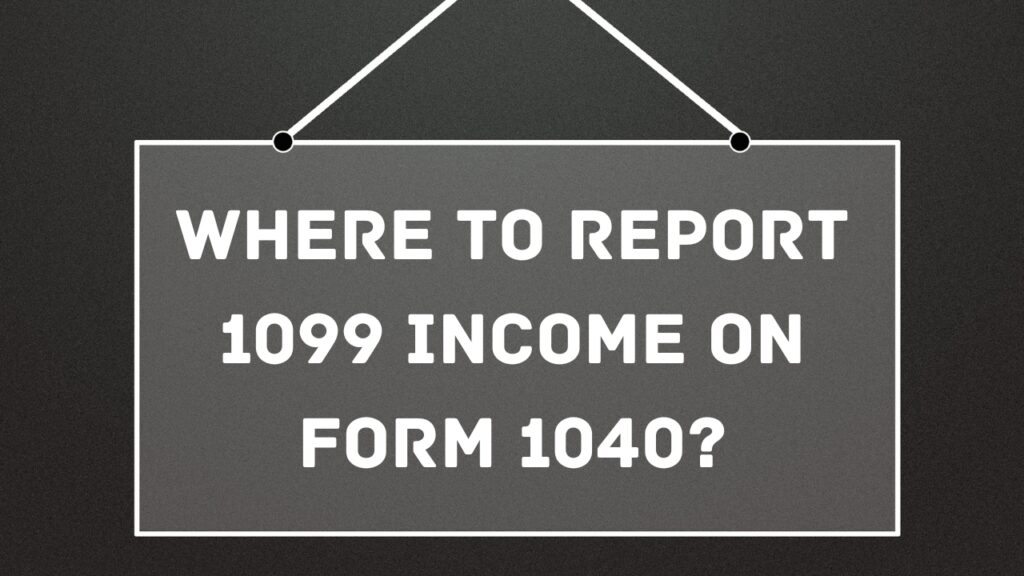
In order to understand, “Where To Report 1099 Income On Form 1040?”, initially, you need to know a little about form 1099. So, without making any further delay, let’s get started!
What is IRS Form 1099?
IRS Form 1099 is a category of informational tax documents used to report various types of income you may receive throughout the year, other than wages, salaries, or tips (which are reported on Form W-2). Businesses, financial institutions, government agencies, and other payers issue 1099 forms to both the taxpayer and the IRS to ensure proper tax reporting.
There are many versions of Form 1099, each tailored to a specific type of income, such as:
- Interest income (Form 1099-INT)
- Dividend income (Form 1099-DIV)
- Independent contractor income (Form 1099-NEC)
- Capital gains from brokerage sales (Form 1099-B)
- Retirement distributions (Form 1099-R)
- Unemployment benefits (Form 1099-G)
- Real estate transactions (Form 1099-S)
- Cancelled debts (Form 1099-C), and more.
Each form typically shows the amount of income, any federal/state tax withheld, and sometimes other tax details, depending on the type.
How Form 1099 Relates to Form 1040?
When you file your annual income tax return using IRS Form 1040, you must incorporate the income shown on your Form 1099s into the appropriate sections of your tax return. Each type of Form 1099 is reported in a different place on Form 1040 or its attached schedules, depending on the nature of the income.
Failure to properly report 1099 income may result in:
- Penalties
- IRS notices
- Increased tax liability
Let’s break down common Form 1099 types, what income they report, and exactly how and where they should be reported on Form 1040.
Where to Report 1099 Income on Form 1040?
IRS Form 1099 is a collection of forms used to report various types of income other than wages, salaries, and tips. The most common variants include Form 1099-NEC, 1099-MISC, 1099-INT, 1099-DIV, 1099-G, and 1099-R. Each type of 1099 must be reported on specific sections of Form 1040, depending on the nature of the income.
1. Form 1099-INT — Interest Income
- What it Reports: Interest income from banks, credit unions, brokerages, or U.S. Treasury obligations.
- Report On:
- Form 1040, Line 2b – Taxable interest
- Schedule B (Part I) – – if your total interest income exceeds $1,500 or comes from multiple sources.
- Example: You received $2,000 from a savings account → Report on Line 2b + Schedule B.
2. Form 1099-DIV — Dividend Income
- What it Reports: Ordinary and qualified dividends from stocks, mutual funds, or REITs.
- Report On:
- Form 1040, Line 3b – Total ordinary dividends
- Form 1040, Line 3a – Qualified dividends
- Schedule B (Part II) –- Dividends exceeding $1,500 must be listed here.
- Example: You earned $1,800 in total dividends, with $900 as qualified → Report both lines + Schedule B.
3. Form 1099-NEC — Nonemployee Compensation
- What it Reports: Self-employment income or gig earnings paid to freelancers or independent contractors.
- Report On:
- Schedule C (Form 1040) – Business income
- Schedule SE – Self-employment tax
- Net flows to Form 1040, Line 8
- Example: You received $10,000 for consulting work → Report on Schedule C.
4. Form 1099-MISC — Miscellaneous Income
- What it Reports: Rents, prizes, royalties, medical/legal payments, and other miscellaneous income.
- Box-specific Reporting:
- Box 1 (Rent) → Schedule E
- Box 2 (Royalties) → Schedule E
- Box 3 (Other Income) → Report the amount from Box 3 (Other Income) on Line 8z of Form 1040
- Example: You received $6,000 in rental income → Report on Schedule E.
5. Form 1099-R — Retirement Plan Distributions
- What it Reports: Withdrawals from pensions, IRAs, annuities, or 401(k)s.
- Report On:
- Lines 4a & 4b – Enter total IRA distributions on Line 4a, and the taxable portion on Line 4b
- Lines 5a & 5b – Pensions and annuities
- Form 8606 – If there’s a non-taxable portion
- Example: $15,000 from a 401(k), all taxable → Report on Lines 5a and 5b.
6. Form 1099-B — Brokerage Sales
- What it Reports: Proceeds from stock, bond, or mutual fund sales.
- Report On:
- Form 8949 – Detailed transaction info
- Schedule D – Summarized capital gains/losses
- Flows to Form 1040, Line 7
- Example: You sold stock for a $1,200 gain → Use Form 8949 and Schedule D.
7. Form 1099-G — Government Payments
- What it Reports: Unemployment compensation, state tax refunds, grants, or agricultural payments.
- Report On:
- Unemployment → Form 1040, Line 7
- Tax refunds → Schedule A interaction (only taxable if itemized prior year)
- Example: You got $7,000 in unemployment → Line 7 on Form 1040.
8. Form 1099-C — Cancellation of Debt
- What it Reports: Canceled or forgiven debt, often treated as taxable income.
- Report On:
- Form 1040, Line 8c or 8z – Other income
- Form 982 – To exclude if you qualify for insolvency
- Example: $5,000 in forgiven credit card debt → Include as income unless you qualify for exclusion.
9. Form 1099-Q — Qualified Education Program Distributions
- What it Reports: Withdrawals from 529 plans or Coverdell ESAs.
- Report On:
- Report earnings only if not used for qualified education expenses
- May be subject to penalty using Form 5329
- Example: $10,000 used fully for college tuition → Generally non-taxable, no reporting needed.
10. Form 1099-SA — Tracks Withdrawals from HSAs and MSAs
- What it Reports: Details distributions received from an HSA or MSA during the tax year.
- Report On:
- Form 8889 – Calculates taxable and nontaxable amounts
- Result flows to Schedule 1, Line 13
- Example: $2,000 used for qualified medical expenses → Tax-free, reported on Form 8889.
11. Form 1099-S — Real Estate Transactions
- What it Reports: Proceeds from the sale or exchange of real property.
- Report On:
- Form 8949 + Schedule D – For calculating capital gain or loss
- Possible exclusion under IRC §121 for primary residences
- Example: $300,000 sale of home with $50,000 gain → Use exclusion if criteria met.
12. Form 1099-K — Payment Card and Third-Party Transactions
- What it Reports: Payments received through PayPal, Venmo (for business), Stripe, etc.
- Report On:
- Schedule C – If payments relate to self-employment/business
- Form 1040, Line 8 – If treated as business income
- Example: $25,000 in online business payments via PayPal → Report on Schedule C.
Summary Table: 1099 Types and Reporting Locations on Form 1040
| Form 1099 Type | Income Type | Report On |
| 1099-INT | Interest income | Line 2b, Schedule B |
| 1099-DIV | Dividends | Lines 3a, 3b, Schedule B |
| 1099-NEC | Self-employment | Schedule C, SE, Line 8 |
| 1099-MISC | Rents, prizes, royalties | Line 8z, Schedule C/E depending on box |
| 1099-R | Retirement distributions | Lines 4–5 |
| 1099-B | Brokerage sales | Form 8949, Schedule D, Line 7 |
| 1099-G | Unemployment/tax refund | Line 7, Schedule A (if needed) |
| 1099-C | Canceled debt | Line 8z, Form 982 |
| 1099-Q | 529 withdrawals | Form 5329 if not qualified |
| 1099-SA | HSA/MSA withdrawals | Form 8889, Schedule 1 |
| 1099-S | Real estate proceeds | Form 8949 + Schedule D |
| 1099-K | Payment processors | Schedule C |
Example: Reporting 1099 Income on Form 1040
Scenario:
Emily, a freelance writer, received the following 1099 forms in 2024:
- Form 1099-NEC showing $15,000 in nonemployee compensation
- Form 1099-INT showing $300 in bank interest income
- Form 1099-DIV showing $800 in qualified dividends
Where to Report on Form 1040:
- Form 1099-NEC →
Report $15,000 on Schedule C (Profit or Loss from Business)
→ Flows to Form 1040, Line 8 - Form 1099-INT →
Report $300 on Schedule B (if over $1,500) or directly on Form 1040, Line 2b - Form 1099-DIV →
Report $800 on Form 1040, Line 3a (qualified dividends) and 3b (ordinary dividends)
→ Include Schedule B if your total dividend income exceeds $1,500.
Conclusion
Each 1099 form corresponds to a specific income type and should be accurately reported on the appropriate schedules and lines of Form 1040. Failure to properly report may result in IRS notices, interest, and penalties. Always retain copies of 1099s for your records.
Frequently Asked Questions (FAQs)
Do I need to attach Form 1099 to my tax return?
In most cases, no. You do not need to attach Form 1099 to your IRS Form 1040 unless the form includes federal income tax withheld (Box 4 or equivalent), in which case a paper return filer must attach it.
Where do I report Form 1099-NEC on Form 1040?
Income from Form 1099-NEC (Nonemployee Compensation) is reported on Schedule C (Profit or Loss from Business) and flows to Line 8 of Form 1040. If applicable, you must also complete Schedule SE for self-employment tax.
How is Form 1099-MISC reported on 1040?
It depends on the type of income:
–Rent (Box 1): Report on Schedule E
–Prizes or awards (Box 3): Report on Schedule 1, Line 8j
–Fishing boat proceeds, medical payments, etc.: Handled according to the income type
Where do I report interest income from Form 1099-INT?
Interest is reported on:
–Schedule B (if interest > $1,500 or from multiple payers)
-Then enter total on Form 1040, Line 2b
What about dividend income from Form 1099-DIV?
–Qualified dividends → Line 3a of Form 1040
–Total ordinary dividends → Line 3b
I received Form 1099-R. Where does it go?
Distributions from retirement plans (IRAs, pensions, etc.) are reported on:
–Line 4a and 4b of Form 1040
-If subject to an early withdrawal penalty, calculate it using Form 5329
I got a Form SSA-1099 for Social Security. Is it taxable?
Yes, partially.
Report on:
–Line 6a (total SSA benefits)
–Line 6b (taxable amount — up to 85% depending on your income)
What about capital gains from Form 1099-B?
-Use Form 8949 and Schedule D to calculate gains or losses
-Final result flows to Form 1040, Line 7
How do I report income from Form 1099-K?
Report income on:
–Schedule C if it relates to business/freelance activity
–Form 1040, Line 8 after calculating net income on Schedule C
-If it’s from personal items sold at a loss, it’s not taxable but should be reconciled with the IRS.
